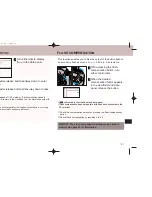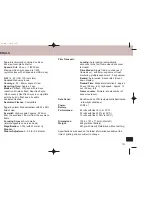
SELF-TIMER
117
SETTING FILM SPEED MANUALLY
116
The self-timer delays the release of the shutter for approximately
10 seconds after the shutter-release button is pressed.
Place the camera on a tripod,
then press the self-timer/drive-
mode button in the control
panel.
Turn either control dial until
appears in the data panel.
Press the shutter release
button partway down to enter
the setting.
Center your subject in the focus frame, then press the
shutter-release button all the way down to start the timer.
• The self-timer lamp will blink after the shutter-release button is
pressed. Three seconds before the picture is taken, the self-timer
lamp will blink rapidly.
• To cancel the self-timer before taking the picture, slide the main switch to
LOCK.
• The self-timer is cancelled automatically after the shutter is released.
• If you are not looking through the viewfinder when the shutter-release
button is pressed, light entering the eyepiece may affect the camera's
automatic exposure settings. To prevent this, attach the eyepiece cap
before starting the self-timer (p 11).
Customized Function #4 - DX Memory
Setting 1 - DX Memory is on.
Setting 2 - DX Memory is off. The camera will not automatically
change the ISO of any DX-coded film. See page 102.
DX Memory
If you change the ISO of a DX-coded roll of film, the new speed
is recorded and used for all following rolls with the same initial
film speed. This is called DX Memory.
Example: You manually change the film speed of a DX-coded roll
of ISO 100 film to ISO 400. The next time you insert a DX-coded
roll of ISO 100 film, the camera automatically resets the ISO to
400.
The default DX Memory setting is ON.
2152EE 17/10/97 11:01 AM Page 116










































